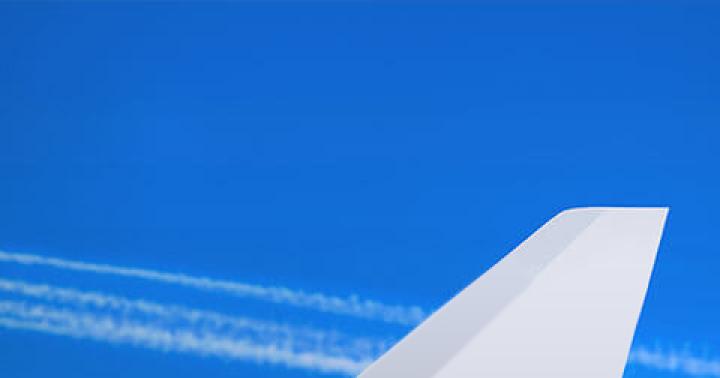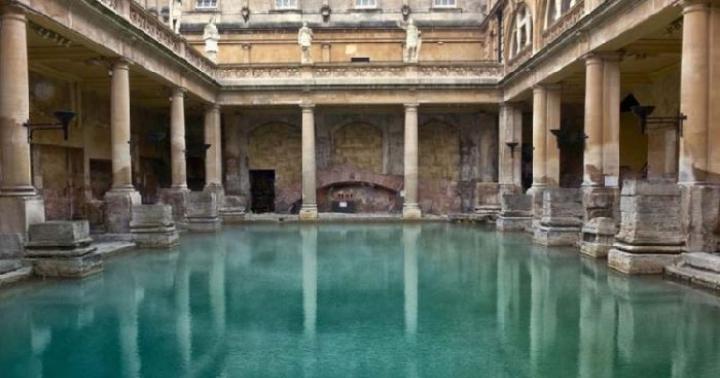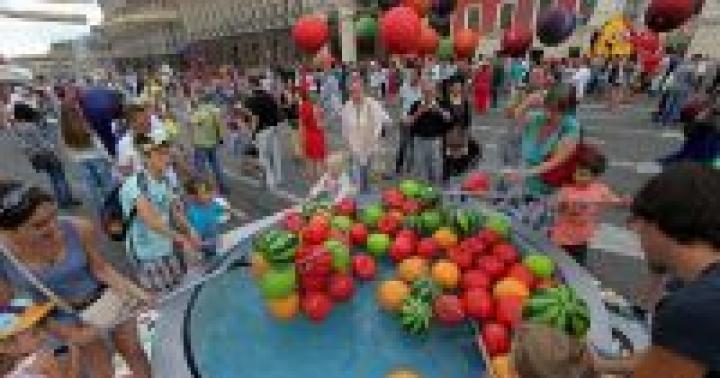Lesson type: combined
Target
— formation of a holistic picture of the world and awareness of a person’s place in it based on the unity of rational-scientific knowledge and the child’s emotional and value-based understanding of personal experience of communicating with people and nature;
Problem:: which countries are located in the center of Europe
Tasks: introduce countries located in the center of Europe.
Subject results
They will learn to talk about the country using physical and political maps, and supplement this information with information from other sources.
Universal educational activities (UUD)
Regulatory:
act according to plan, make the necessary adjustments, and adequately evaluate your achievements.
Cognitive:
understand the learning task and strive to complete it.
Communicative:
participate in a general conversation, enter into dialogue with the teacher and classmates.
Personal results
Formulate conclusions from the material studied, answer final questions, evaluate achievements in the lesson.
Basic concepts and definitions
Preparing to learn new material
We will go to the central part of Europe and
find out which countries are located there. We will learn to tell about them on the map, supplement this information with information from other sources.
Remember which countries are located in the north and north-west of Europe. What particularly interested you in these countries?
Learning new material
In the centre of Europe
In the center of Europe we will visit three countries: Germany, Austria and Switzerland.
Tell us about these countries on the map. Supplement this information using the table on p. 126.
Countries in the center of Europe
If you have ever been to Germany, Austria or Switzerland, tell us about your impressions.
Use a textbook to get acquainted with one of the countries in central Europe. Take advantage of other sources of information. Complete the corresponding tasks in the workbook. Present the results of your work to the class.
GERMANY
Germany is a large state in the central part of Europe. There are many large cities here. We will visit some of them.
Capital of Germany - Berlin— is located in the eastern part of the country. There are many interesting things in Berlin, for example, the majestic Brandenburg Gate (1), the tall TV tower (2). Berlin Zoo is the largest in the world.

In the northern part of the country there is a city Bremen. Here you can see a monument to the famous Bremen Town Musicians - the heroes of the fairy tales of the German storytellers the Brothers Grimm (3).
In the western part of the country there is a city Cologne. Its main attraction is the huge, fantastically beautiful Cologne Cathedral (4). It took 600 years to build. Along the stone staircase, which has 500 steps, you can climb to the tower of the cathedral. From there you can see the whole city. Cologne is located on the Rhine, the largest river in Germany (5). 
AUSTRIA
From the German city of Munich it is not far from Austria. Its capital Vein is rightfully considered one of the most beautiful cities in the world. This is a city of palaces and parks. In the center of Vienna stands the soaring St. Stephen's Cathedral. To climb its tower, you need to overcome more than 300 steps. You can drive through the streets of Vienna in an old fiacre (a carriage drawn by a pair of horses).
Residents of Vienna are proud that the great composer Johann Strauss (1825-1899), who composed wonderful waltzes, lived in their city. A monument to him was erected in one of the parks. This is Vienna's most famous monument. Almost every tourist tries to take a photo near him


Vienna is located in the flat part of Austria. But most of the country is occupied by the Alps. They are very beautiful. comes here
lots of people to go skiing.
SWITZERLAND
From Austria our route lies to Switzerland. As in Austria, most of the country is occupied by the Alps. But here they are higher than in Austria. We will see many deep gorges, picturesque peaks covered with snow and ice. Switzerland is famous for its mountain resorts
She is also famous for her banks. The money of many rich people from different countries is stored in their safe safes.
Like Sweden, Switzerland has not been involved in any wars for a very long time.

Comprehension and understanding of acquired knowledge
Read the texts. Use this information to prepare your own reports about European countries
1. One of the greenhouses in Vienna has been turned into a “Butterfly House”. Coming here, you find yourself in an amazing tropical forest with huge trees, waterfalls and many flowers. And you see live butterflies everywhere! They can be photographed and recorded on a video camera.

2. Many years ago, the German poet Heinrich Heyne, addressing the Rhine River, wrote: “Hello, my old Rhine! How's your health?”
Now this question would sound very relevant. Although the name "Rhine" means "clean", so much wastewater was dumped into it that the Rhine had to be recognized as the most polluted river in Europe.
check yourself
1. Find and show Germany, Austria, Switzerland and their capitals on the map.
2. Tell us about the sights of these countries.
3.Describe the sights of these countries based on photographs in the textbook.
4. From what sources did we receive information about the countries of central
parts of Europe?
Conclusion
Germany, Austria and Switzerland are states in central Europe. The largest of them is Germany. Large cities: Germany - Berlin, Bremen, Cologne.
Homework assignments
1.Write in the dictionary: cab driver
2. Find out which products from the countries studied in the lesson are sold in our stores. Make a list of such products.
3. In Cologne, many souvenirs depicting the Cologne Cathedral are sold. You can buy a small cathedral made of wood, metal, plastic, glass. Try to sculpt a model of Cologne Cathedral or another from plasticine
landmark of the countries we visited.
Germany. Interesting facts about Germany.
Sights of Berlin 1
Bremen. Germany. Mini sightseeing tour
CologneAndhisattractions/ Germani
The central part of Europe is home to many countries, each of which has a unique history, distinctive culture and rich traditions. Among them, the three largest and most important states stand out the most: Germany, Austria and Switzerland. Let's look at this topic in more detail according to the 3rd grade program of the world around us.
Germany
Germany is the largest state in Central Europe. The capital is Berlin, the official language is German, the form of government is a parliamentary republic. The country is a member of NATO and the European Union, and is part of the G7.
The Rhine River flows through Germany, which has been one of the most important shipping routes since ancient times.
Thanks to its favorable geographical location, Germany has well-established economic relations with all European countries, in particular with the Benelux countries, with which it borders in the west.
What is Benelux? These are three Western European states that have formed a customs, economic and political union. Its name consists of the first syllables of the names of the countries that are part of it: Belgium, the Netherlands and Luxembourg.
Germany is the world's largest manufacturer of cars and high-quality household appliances. Products produced in this country are in great demand all over the world.
TOP 4 articleswho are reading along with this

Rice. 1. German cars.
In addition, Germany is a diverse country with a rich history. Its attractions include beautiful medieval castles, Gothic churches, ancient breweries, and much more.
Austria
Austria is a picturesque alpine country, one of the richest countries in the world. The capital is Vienna, the official language is German. Austria is part of the European Union and is a member of NATO. The president rules the country.
Austria is not only a very rich, but also a beautiful country. On its territory there are numerous mountain ranges of the Eastern Alps, attracting tourists from different parts of the world.
In addition to well-developed tourism, the state treasury is regularly replenished from the products of three important industries:
- car equipment;
- textile production;
- metallurgy.
In addition, Austria is famous for its confectionery, excellent coffee and luxury Porsche cars.
Everyone who comes to this country strives to see its sights: the Eisriesenwelt cave, the largest Pasterze glacier, the Großglockner high mountain road, the Benedictine monastery, the Vienna Kunsthistorisches Museum.

Rice. 2. Vienna Philharmonic.
Austria has long been recognized as the most musical country in Europe. Its rulers have always been very fond of music, and in the 18th and 19th centuries composers from all over Europe came to the country. No concert hall or theater in the world has ever been able to compare with the Vienna Philharmonic, the State Opera or the Vienna Boys' Choir.
Switzerland
Switzerland is one of the most beautiful countries in the world with a unique natural landscape. The capital is the city of Bern, the official languages are French, German, Italian, Romansh. The country is ruled by the Federal Council.
Switzerland is a famous European health resort, which has been very popular among tourists and those wishing to improve their health for more than a hundred years. Ski lovers also come here: the Swiss Alps are famous for their slopes of varying degrees of difficulty.

Rice. 3. Ski resort in Switzerland.
Switzerland is famous throughout the world not only for its resorts, but also for its banks and watches, in a word, for everything that all people associate with the highest quality.
What have we learned?
When studying the topic “In the Center of Europe” (grade 3) according to the program of the world around us, we found out which of the most developed countries are located in the central part of Europe. Germany, Switzerland and Austria are famous for their well-developed stable economies, picturesque landscapes and unique centuries-old culture.
Test on the topic
Evaluation of the report
Average rating: 4.6. Total ratings received: 324.
IN center Europe
Target: introduce countries located in the center of Europe.
Planned results : Students will learn to talk about the country using physical and political maps, supplement this information with information from other sources, work in groups, analyze, compare, and draw conclusions.
Equipment: political map of Europe; reference literature; videos about Germany, Austria and Switzerland.
Move lesson
I . Organizational moment
II . Update knowledge . Examination home tasks
Frontal survey
- What is Benelux?
- In what part of Europe are the countries of Belgium, the Netherlands, and Luxembourg located?
- Name the capitals of these countries.
- What is remarkable about these countries?
- Why is the Netherlands called the land of canals, bicycles and tulips?
- What country have you prepared a message about? Tell me
- What interesting facts about countries did you find?
III . Self-determination To activities
- Find on the political map the country whose column is Berlin. What is the name of this country?(Germany)
- Find on the political map the country whose capital is Vienna. What is the name of this country?(Austria.)
- Find on the political map the country whose capital is Bern. What is the name of this country?(Switzerland!)
Today in class we will talk about these countries.
IV . Job By topic lesson
- In the center of Europe we will visit three countries: Germany, Austria, Switzerland.
(Students are divided into three groups.)
- Tell about these countries using the textbook text on p. 126-130, as well as materials from encyclopedia reference books.
V . Physical education minute
VI . Consolidation studied material
Completing tasks in the workbook
№ 1 (p. 63).
- Read the assignment. Look at the map.
- Using the map in the textbook on p. 125, complete the task.
- Which country has the largest area and is shown in brown on the map?(Germany.)
- Name the capital of Germany.(Berlin.)
-
- Which country is shown in yellow on the map?(Austria.)
- Name the capital of Austria.(Vein.)
- Write the names of the country and capital.
- Which country is shown in green on the map?(Switzerland.)
- Name the capital of Switzerland.(Berne.)
- Write the names of the country and capital.No. 2 (p. 63).
- Read the words in the first line.
- Find the extra word.(Vein.)
- (Vienna is a city, the capital of Austria; the rest- names of countries.)
- Read the words in the second line.
- Find the extra word.(Germany.)
- Prove that this word is superfluous.(Germany is a state; the rest are city names.)
№3(p.64).
- Read the names of the cities that the boy wrote down.
- Find these cities on the map. Is everyone in Germany?
- Name cities that are located in other countries.(Geneva is in Switzerland, Salzburg is in Austria.)
- Cross out the names of these cities.
№ 4 (p. 64).
- Read the assignment. Review the table.
- Find information about the sights of Germany in the text of the textbook. Name them.(Brandenburg Gate, Berlin Zoo, television tower, Cologne Cathedral, monument to the Bremen musicians.)
- Enter in the table.
- Name the sights of Austria.(St. Stephen's Cathedral, cabs, monument to Johann Strauss.)
- Enter in the table.
- What attractions are there in Switzerland? Name them.(Mountain resorts, banks.)
- Enter in the table.
- Which of these countries have you visited? What can you tell us about them? Mark these countries with a “+” sign.
№5 (p. 65).
- Read the assignment. Find the photos in the appendix for this assignment, cut them out and paste them.
- In which country is Cologne Cathedral located?(In Germany.)
- What can you tell us about him?
- Sign the name of the country.
- In which country is the monument to the Bremen Town Musicians located?(In Germany.)
- Who wrote the fairy tale "The Town Musicians of Bremen"?(Brothers Grimm.)
- Sign the name of the country.
- In which country is the Johann Strauss monument located?(In Austria.)
(The teacher can turn on an audio recording of a waltz by J. Strauss.)
№ 6 (p. 65).
- Use the tutorial to color the flags.
VII. Reflection
- Complete the table.
| A country | Capital | State language | Rivers flowing through the territory | Attractions |
| German | Danube | Monument to I. Strauss |
||
| Germany | ||||
| German, French, Italian |
VIII. Summing up results lesson
- Which states have you met?
- What do you remember most?
So, Germany, Austria and Switzerland are states in the central part of Europe. The largest of them is Germany. Large cities in Germany - Berlin, Bremen, Cologne.
Homemade exercise
2. Prepare a report on any country in central Europe
1. Using the textbook map, label the names of the countries highlighted in color and their capitals.
2. Cross out the extra word on each list. Explain your decision verbally.
- Answer: a) Germany, Austria, Vienna, Switzerland. b) Berlin, Vienna, Bern, Germany.
3. Complete the tasks: 1) Learn to show the country you are studying and its capital on the map. The territory of the country should be smoothly outlined with a pointer along the contour (border). Show the symbol of the capital, not its name. 2) Write down the sights of the country you are studying in the table. 3) Describe the sights of the country you are studying based on photographs in the textbook or other sources.
- Answer:
4. Use the tutorial to color the flags.

5. Seryozha received the task of listing the cities of Germany. He said: "Berlin, Hamburg, Bremen, Cologne, Bonn, Munich, Geneva, Salzburg." Check with the textbook map. If Seryozha made a mistake, cross out the extra names. Explain (verbally) your decision.
- Answer: Geneva.
6. Continue filling out the table on p. 77. Based on reports from children from other groups, enter examples of attractions from other countries in the table.
- Answer:
7. Ant and Turtle are wondering if you know these landmarks. Cut out the photos from the Application and place them in the appropriate boxes. Test yourself using the textbook. After checking, paste the photos. Indicate the names of the countries with arrows.

8. In the chapter on Austria of the book “Encyclopedia of Travel. Countries of the World”, choose a section that is especially interesting to you. For example, “From the history of the country”, “Nature and its protection”, “Population and culture”. Prepare a message on the chosen topic.
- Answer:
- Subject: Butterfly House.
- Important information: One of Vienna's greenhouses has been converted into a "Butterfly House". Coming here, you find yourself in an amazing tropical forest with trees, waterfalls and many flowers. And you see live butterflies everywhere! They can be photographed and videotaped.
9. Make a list of reminder words about Germany and Switzerland (modeled on the rubric “Tying knots for memory from the book “Encyclopedia of Travel. Countries of the World”).


